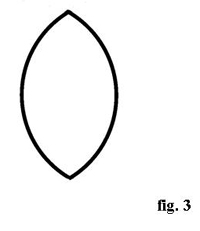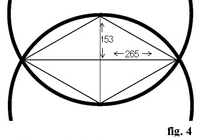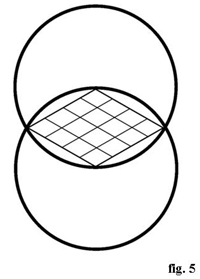The Origin of the “Jesus Fish”
And the Significance of the 153 Fish in John 21


By: David Deschesne
Editor/Publisher, Fort Fairfield Journal
February 1, 2017
The fish has been a symbol of Christianity for nearly 2,000 years. The disciples were fishermen, Jesus multiplied a few bread loaves and two fish to feed the masses and a story in John 21 recounts how Jesus instructed his disciples to cast their net into the sea and they pulled in exactly 153 fish.
Most modern establishment Christian commentaries on John offer little insight to the significance of the number 153. Some say it has to do with the number of miracles Jesus performed, others simply declare it to be a divine number with nothing to support or back up their claim. One commentary online even offers a childish explanation for the 153 as the “definitive” explanation of the number by stating, “fishermen count their fish.”1 and that’s simply how many they caught.
It is probably safe to say most modern Christians have no idea where the fish symbol originated or what the significance of the number 153 is. However, that does not mean it’s a mystery. To learn about the fish symbol’s origins we need to go back over 500 years before Christ to the ancient philosopher and mathematician, Pythagoras.
Pythagoras was born in 582 B.C.. He is said to have traveled from Persia to Gaul, and even to India, seeking wisdom, and to have lived in Egypt for many years.2
In addition to studying mathematics, Pythagoras also founded a religious society in Crotona, Italy in 530 B.C. He preached reincarnation and the transmigration of souls at death from one human to another, or even between humans and animals. His theosophical religious community sought the moral reformation of society through a series of rites and abstinences intended to purify the believer’s soul and release him from the “wheel of birth.”3
Porphyry also notes a story about Pythagoras similar to the fish story in John 21 where Pythagoras miraculously predicted the exact number of fish that would be caught by a group of fishermen he met in Croton.4
The fish symbol, or vesica piscis originated with Pythagoras and his study of number systems. The number 153 can then be found encoded within it as part of a ratio.
Vesica Piscis
 The Vesica Piscis, also called “the vessel of the fish” or “the womb of the universe,” is derived by taking two circles of equal diameter and overlaying them in such a way that their circumferences touch each other’s epicenters (fig. 1).
The Vesica Piscis, also called “the vessel of the fish” or “the womb of the universe,” is derived by taking two circles of equal diameter and overlaying them in such a way that their circumferences touch each other’s epicenters (fig. 1).
 The fish symbol is then extrapolated from the pointed oval that both circles create (fig. 2).
The fish symbol is then extrapolated from the pointed oval that both circles create (fig. 2).
In ancient architecture, the fish symbol has its tail fin removed and the pointed oval is oriented vertically (fig. 3). It is a common form given to a panel in which the figure of Christ is represented. It is employed in mediæval seals, especially those of bishops as well as those of numerous monastic establishments.5
In earlier times the symbol was associated with the goddess Venus, and represented the female genitalia. It is used in Christian art with Jesus placed in its midst as a symbol of Christ being born from a woman’s womb. The vertically oriented pointed oval was also called the yoni and is a world-wide Tantric symbol of the female vulva used to represent the Hindu Goddess Kali. “It was associated with the ‘Fishy Smell’ that  Hindus made a title of the yonic Goddess herself, because they said women’s genitals smelled like fish.”6
Hindus made a title of the yonic Goddess herself, because they said women’s genitals smelled like fish.”6
Fish and womb are synonymous in the Greek as well since the Greek delphos meant both womb and fish.7
In addition to the symbol for Christ and the female vulva/vagina, the vesica piscis is also used to represent the joining of God and Goddess, a representation of Creator and Created/Observer and Observed, is the basic motif in the Flower of Life, is an overlay in the Tree of Life and possesses a geometrical description of square roots and harmonic proportions.
153
The pointed oval of the vesica piscis can be divided into four equal right triangles whose height and width are expressed in the ratio 265:153. (fig. 4).
 This is undoubtedly where the number 153 comes from in the Book of John which is thought by some to be a coded reference to Pythagorean beliefs.
This is undoubtedly where the number 153 comes from in the Book of John which is thought by some to be a coded reference to Pythagorean beliefs.
153 is a very interesting number. The ratio of 265:153 can be condensed down via division to1.73203, which is called “the measure of the fish.” This is the closest whole number ratio to the square root of the number 3 (1.73205).
An interesting aspect of 153 and the number 3 is when you take each number in 153 and multiply it by itself three times, then add up the products, you will get 153. For example:
1 x 1 x 1 = 1
5 x 5 x 5 = 125
+ 3 x 3 x 3 = 27
153
Another link to 153 is via the number 17, both of which are triangular numbers. If you add all of the numbers from 1 through 17 together you will come up with 153. 17 multiplied by the square of 3 also equals 153 (17 x 9 = 153).
 Using the number 17, the ancients drew a fisherman’s net inside the fish symbol’s parallelogram by using a system of parallel lines that created sixteen smaller versions of the parallelogram which, when counted with the original parallelogram, equaled 17 (fig. 5).
Using the number 17, the ancients drew a fisherman’s net inside the fish symbol’s parallelogram by using a system of parallel lines that created sixteen smaller versions of the parallelogram which, when counted with the original parallelogram, equaled 17 (fig. 5).
All of these number relations were worked out over 500 years before Christ. The associated symbolism of the fish symbol was adopted as an identifying symbol for Christians years after the resurrection.
ichthus
The word for fish in Greek is ΙΧΘΥΣ (ichthus). It was adopted by Christians of the early church to support their use of the Pythagorean fish symbol.
The word became significant to Christians after St. Augustine, who extracted the word from acrostic prophecy of the Erythraean Sibyl, and applied the kabalistic technique of notarikon (acrostic) to the phrase Iesous Christos Theou Uios Soter (Jesus Christ, Son of God, Savior)8to create the acronym ICTHUS (Greek: fish) and thus parallel the fish stories in the Gospels with Christ’s title in Greek.
The Age of Pisces
As the Earth rotates on its axis it tends to wobble like a spinning top due to the gravitational effects of the moon and sun (and to a lesser extent, from the other planets in the solar system). It takes 25,765 years for the Earth’s axis to rotate one complete wobble. This wobble causes the sun to slightly change its apparent position in the sky on the vernal equinox (first day of Spring) relative to the 12 zodiac signs that surround us in a celestial circle. This is called the Precession of the Equinox.
Around the time of Christ’s birth the sun was just beginning to enter the constellation Pisces (two fishes) as it was leaving the constellation Aries. That it entered the fish constellation is another reason fish is so closely related to the Christ story as the disciples were fishermen, Christ fed the masses with fish (and bread), and Christ ate fish after the resurrection. Christ’s followers were called “the little fishes” and represented by two fishes—a symbol for Pisces.9
“The ancient Egyptian name of this constellation, as shown on the Zodiac of the Denderah, is ‘Pi-Cot Orion’ or ‘Pisces Horie’, meaning, ‘the fish prolonged’, giving the idea of posterity or successive generations. The Hebrew name is ‘Dagim’, meaning, ‘the fishes’. In the Arabic as well as the Greek and Latin names we find the meaning is also ‘the Fishes.’”10
The sun spends around 2,147 years in each constellation of the zodiac so by some estimates within the next hundred years or so it will be leaving Pisces and entering the constellation Aquarius. Some say we are now in the “dawn of the age of Aquarius” and it has even been the theme of a popular 1960’s song.
“The Aquarius symbol is metaphoric in content—meaning ‘closure in water’. Water represents the collective unconsciousness or conscious hologram which creates the grid programs of our physical reality. Many connect the Age of Aquarius with the return of the goddess, priestess, or feminine energies—those that vibrate above/faster than physical frequency. This is the return to higher consciousness, the awakening of higher mind and thought in the alchemy of time.”11
To the Pythagoreans, the whole of creation was based on number, and by studying the properties of number, they believed one could achieve spiritual liberation. The vesica piscis was the symbol of the first manifestation, the dyad (reflection) that gave birth to the entire universe. Within the vesica can be found the triangle, the tetrad, the square, the pentacle, and many more polygons, making the vesica a true symbolic womb.12
These historical points and concepts are unfortunately lost on most Bible commentators and Christian pastors, so most Christians will never learn about their symbolism or origins while locked inside the orthodox, establishment Biblical narrative.
Notes
1. http://www.patheos.com/blogs/religionprof/2013/04/153-fish-the-definitive-explanation.html
2. Lincoln Library of Essential Information, ©1965 The Frontier Press Co., Vol 2, p. 1953.
3. Encyclopedia Britannica, 1958 ed., Vol 18, p. 803.
4. The Jesus Mysteries, ©1999 Tim Freke & Peter Gandy, p. 39
5. Encyclopedia Britannica, 1958 ed., Vol. 23, p. 106
6. Woman’s Encyclopedia of Myths and Secrets, ©1983 Barbara G. Walker, p. 313
7. op cit., p. 313
8. http://symboldictionary.net/?p=1127
9. http://freethoughtproject.com/jesus-christ-avatar-of-the-age-of-pisces/
10. The Glory of the Stars, E. Raymond Capt, ©1976 Artisan Sales, p. 83
11. http://www.crystalinks.com/precession.html
12. http://symboldictionary.net/?p=1127
all graphics and drawings/David Deschesne









